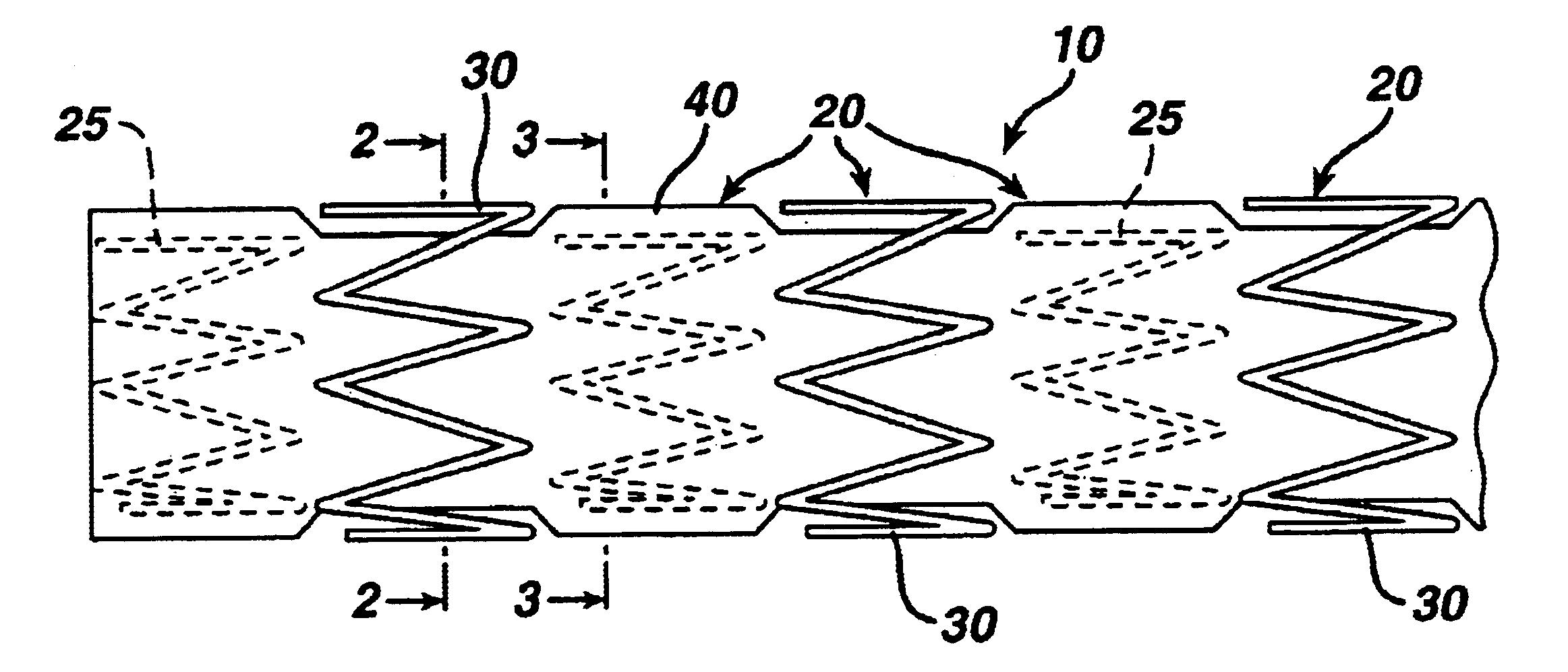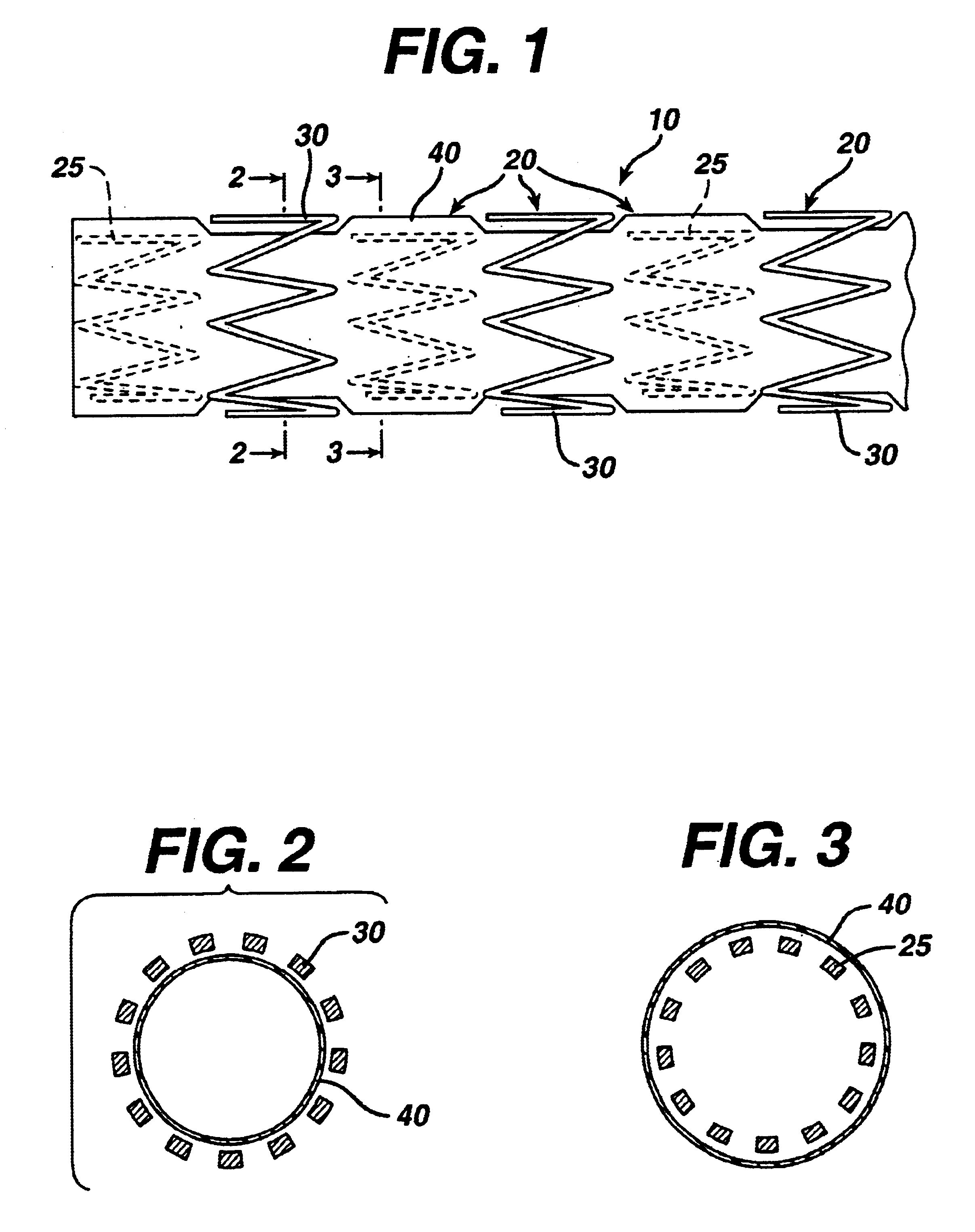Covered segmented stent
a stent and segmented technology, applied in the field of medical devices, can solve the problems of reduced effective size, limited application of balloon angioplasty to certain blood vessels, and myocardial infarction or heart attack, and achieve the effect of maximizing the flexibility of the sten
- Summary
- Abstract
- Description
- Claims
- Application Information
AI Technical Summary
Benefits of technology
Problems solved by technology
Method used
Image
Examples
Embodiment Construction
[0029]The present invention is directed to a covered stent graft 10 comprised of individual stent rings 20 alternately loaded inside 25 and outside 30 of a covering material 40. The rings 20 supply radial strength. individually, but the rings are not connected to adjacent rings longitudinally.
[0030]The present invention is in the general art of stent grafts. Stent grafts are useful in treating two conditions—aneurysmal disease and thrombotic or friable stenotic lesions. For aneurysmal disease, the stent graft 10 is covered with a material 40 (typically DACRON or expanded polytetrafluoroethylene (“ePTFE”) which allows the stent to span the aneurysmal vessel segment and to seal blood flow and pressure from reaching the aneurysmal sac. The fabric covering 40 typically is porous, but with small enough pores to coagulate acutely and to exclude the aneurysm from the transmitted blood pressure. Once the aneurysm is excluded, the sac is expected to shrink in size, and the risk of rupture is...
PUM
 Login to View More
Login to View More Abstract
Description
Claims
Application Information
 Login to View More
Login to View More - R&D
- Intellectual Property
- Life Sciences
- Materials
- Tech Scout
- Unparalleled Data Quality
- Higher Quality Content
- 60% Fewer Hallucinations
Browse by: Latest US Patents, China's latest patents, Technical Efficacy Thesaurus, Application Domain, Technology Topic, Popular Technical Reports.
© 2025 PatSnap. All rights reserved.Legal|Privacy policy|Modern Slavery Act Transparency Statement|Sitemap|About US| Contact US: help@patsnap.com


